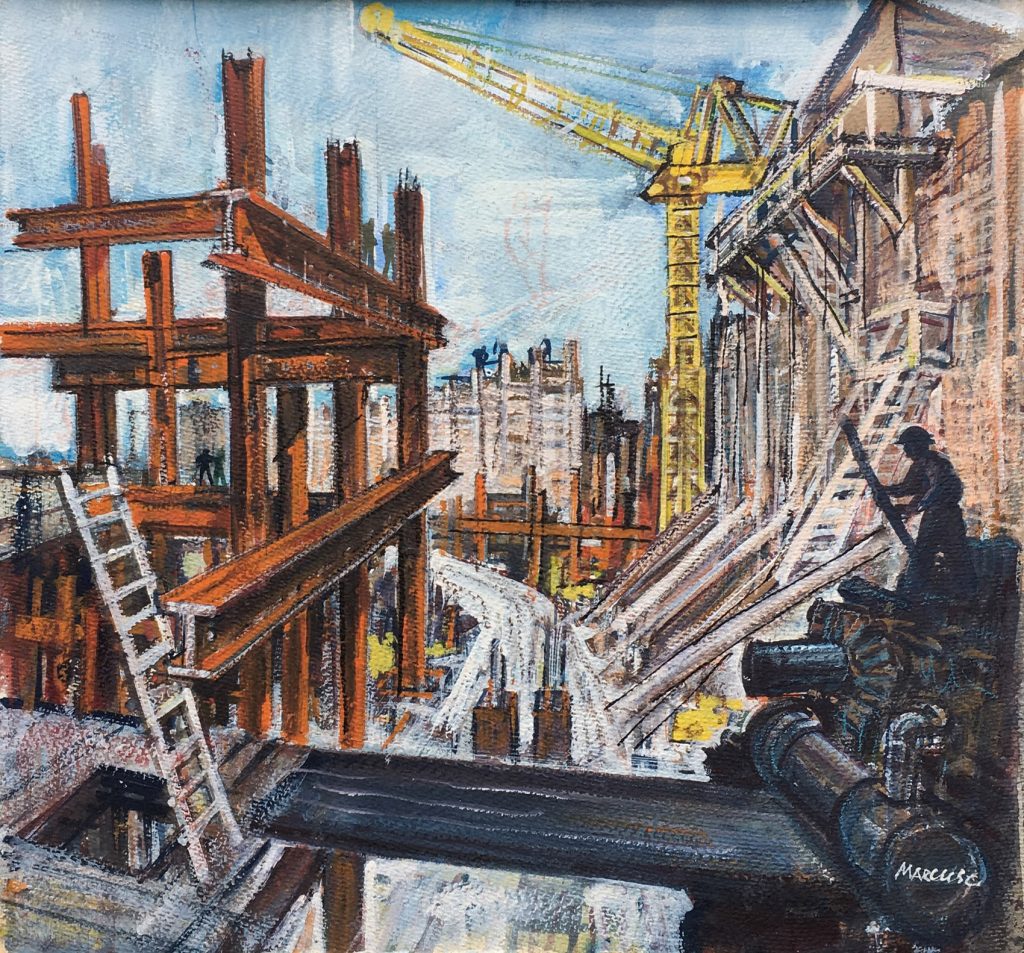Ernest Marcuse, drawings, 20th century Melbourne, construction, c1960s
Summary
Born in Berlin, Ernest Marcuse (1900–85) studied at the Berlin School of Interior Design & Cabinetmaking and at the Reimann School before working as a freelance commercial artist, specialising in architectural, industrial and figurative drawing. With the rise of Nazism in 1933, Marcuse’s ability to work freely in Germany was curtailed due to his Jewish heritage, and he soon left for Britain, where he met his wife. He arrived in Australia as a refugee in October 1939, but unlike many refugees during wartime he was not interned. His artistic talent recognised, he was allowed to pursue employment, and within a month he was creating illustrations for ‘The Argus’, focusing on war themes and events. From 1942 to 1945 he was in the Australian Army at Bonegilla (Vic.) and at Woodside (SA), where he created artwork and layouts for officer training manuals, work for which he was much praised by his superiors. Following the war, until 1969, he was a freelance commercial and graphic artist.
Given Marcuse’s specialisation in architectural and industrial drawing, it’s unsurprising to see him turn his consummate skills to expressing his new home city. With its strong lines and bright, buoyant colours, this muscular vision of the modernising city is infused with the aspirational spirit of the mid-20th century. This drawing was acquired for the collection in 2019.
